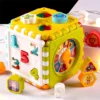Feeding your baby is one of the most intimate and important activities in the early months of parenthood. However, along with the joy of feeding comes a series of questions and practices aimed at ensuring your little one’s comfort and health. One common query among new parents is, “When can I stop holding baby upright after feeding?” Understanding the reasons for holding your baby upright, the appropriate duration for this practice, and the signs that indicate readiness for a change can help you foster a comfortable feeding routine. This article will explore safety considerations and best practices to ensure a positive feeding experience for both you and your baby.
Understanding Infant Feeding Needs
Before we dive into the specifics of when to stop holding your baby upright after feeding, it’s important to understand your baby’s feeding needs.
Feeding Methods and Developmental Stages
Babies typically rely on either breastfeeding or bottle-feeding in the first months of life. Both methods require different approaches to ensure that the baby is comfortable and secure during feeding.
- Breastfeeding: Infants may feed more frequently in smaller amounts, often needing to be held upright to help with digestion.
- Bottle-Feeding: Depending on the flow of the nipple, some babies may gulp air, leading to discomfort if not held upright afterward.
Importance of Proper Feeding Techniques
Correct feeding positions can make a significant difference in your baby’s comfort. Ensuring a good latch during breastfeeding or the right angle while bottle-feeding can help minimize issues like air swallowing, which can lead to gas and discomfort later.
Why Holding Baby Upright After Feeding Matters
Reducing the Risk of Reflux and Spit-Up
Holding your baby upright after feeding helps prevent reflux and spit-up, common issues in infants. The upright position encourages gravity to assist in keeping the milk in the stomach, reducing the likelihood of it coming back up.
Promoting Better Digestion
An upright position can also promote better digestion. It allows the food to settle properly in the stomach, minimizing discomfort that might occur if the baby is laid down too soon after feeding.
Providing Comfort and Security
Finally, holding your baby close after feeding helps provide comfort and security. This bonding time allows your baby to feel safe and relaxed, which is important for their emotional development.
Recommended Duration for Holding Baby Upright
General Guidelines
The general recommendation is to hold your baby upright for about 20 to 30 minutes after each feeding. This duration can help minimize reflux and give your baby time to digest.
Factors Influencing Duration
While the 20 to 30-minute rule is a good guideline, several factors may influence how long you should hold your baby upright:
- Individual Needs: Each baby is different. Some may need more time to digest, especially if they have a history of reflux.
- Type of Feeding: Breastfed babies may need less time upright compared to bottle-fed babies, depending on their feeding habits.
Signs Your Baby Is Ready to Stop Being Held Upright
As your baby grows, they will develop more strength and control over their body. Here are some signs that indicate your baby may be ready to stop being held upright after feeding:
Physical Signs
- Head and Neck Control: If your baby can hold their head up steadily and control their movements, they may be ready for a different position post-feeding.
- Sitting Independently: Once your baby can sit up with minimal support, they may no longer need to be held upright after feeding.
Behavioral Cues
- Reduced Spit-Up: If your baby is consistently spitting up less frequently after feedings, it might indicate that it can transition away from the upright position.
- Comfort in Different Positions: If your baby seems comfortable when lying down shortly after feeding, it may be ready for a change.
Best Practices for Feeding Positions
Upright Feeding Positions
When feeding your baby, whether breast or bottle, consider using upright positions that promote good feeding practices:
- Cradle Hold: This position is great for breastfeeding and allows you to support your baby’s head and neck while feeding.
- Bottle-Feeding Angle: Hold the bottle at an angle that minimizes air intake, keeping the nipple filled with milk.
Transitioning to Different Positions
When your baby is ready, you can gradually transition them to lying down or sitting in a supported position post-feeding:
- Laying Down Safely: If you choose to lay your baby down, ensure that they are placed on their back, and monitor them closely for comfort.
- Supported Sitting: Once your baby can sit independently, consider using a supportive seat that keeps them safe and secure during the transition.
Monitoring Your Baby
Always be attentive to your baby’s reactions. If they show signs of discomfort, return to holding them upright until they are more settled.
Common Concerns and Solutions
Many parents have concerns about transitioning away from holding their baby upright after feeding:
Fear of Reflux or Spit-Up
If you are worried about your baby’s reflux, consult your pediatrician for tailored advice. They can help determine if your baby’s feeding patterns require additional adjustments.
Ensuring Comfort and Security
To make the transition easier, continue to offer comforting practices, such as gentle rocking or soothing sounds, to help your baby feel secure even when they are not being held upright.
Consulting Healthcare Professionals
If you have specific concerns about your baby’s readiness to stop being held upright after feeding, it’s always a good idea to consult a pediatrician.
When to Seek Advice
- Developmental Concerns: If you notice that your baby is not meeting milestones related to sitting or head control, your doctor can provide guidance.
- Feeding Issues: If your baby struggles with feeding or shows signs of discomfort frequently, seeking professional advice is essential.
Conclusion
Understanding when can I stop holding baby upright after feeding is vital for ensuring your baby’s comfort and well-being. Generally, holding your baby upright for about 20 to 30 minutes post-feeding is recommended, but readiness for transition can vary from child to child. By observing your baby’s developmental signs and being attentive to their cues, you can create a safe and comfortable feeding routine that fosters their growth.
Always prioritize safety and comfort during feeding, and consult healthcare professionals if you have any concerns about your baby’s development or feeding habits.
FAQ’s
- When can I stop holding my baby upright after feeding?
A. Most babies can transition away from being held upright after about 6 months, but it can vary based on individual development. - What are the signs that my baby is ready to transition?
A. Look for signs like good head and neck control, decreased spit-up, and comfort in different positions after feeding. - How long should I hold my baby upright after each feeding?
A. It is generally recommended to hold your baby upright for about 20 to 30 minutes after feeding. - What feeding positions are best for preventing reflux?
A. Upright feeding positions such as the cradle hold or angled bottle-feeding can help minimize reflux. - When should I consult a doctor about my baby’s feeding habits?
A. If your baby shows persistent discomfort, feeding issues, or developmental concerns, it’s best to consult a healthcare provider for personalized advice.









